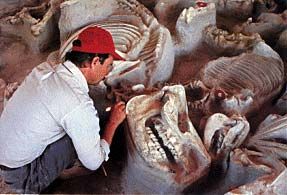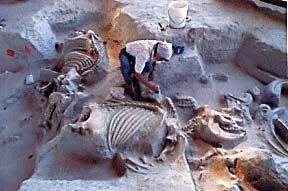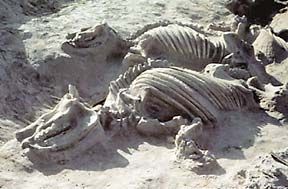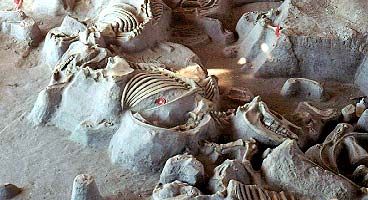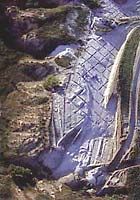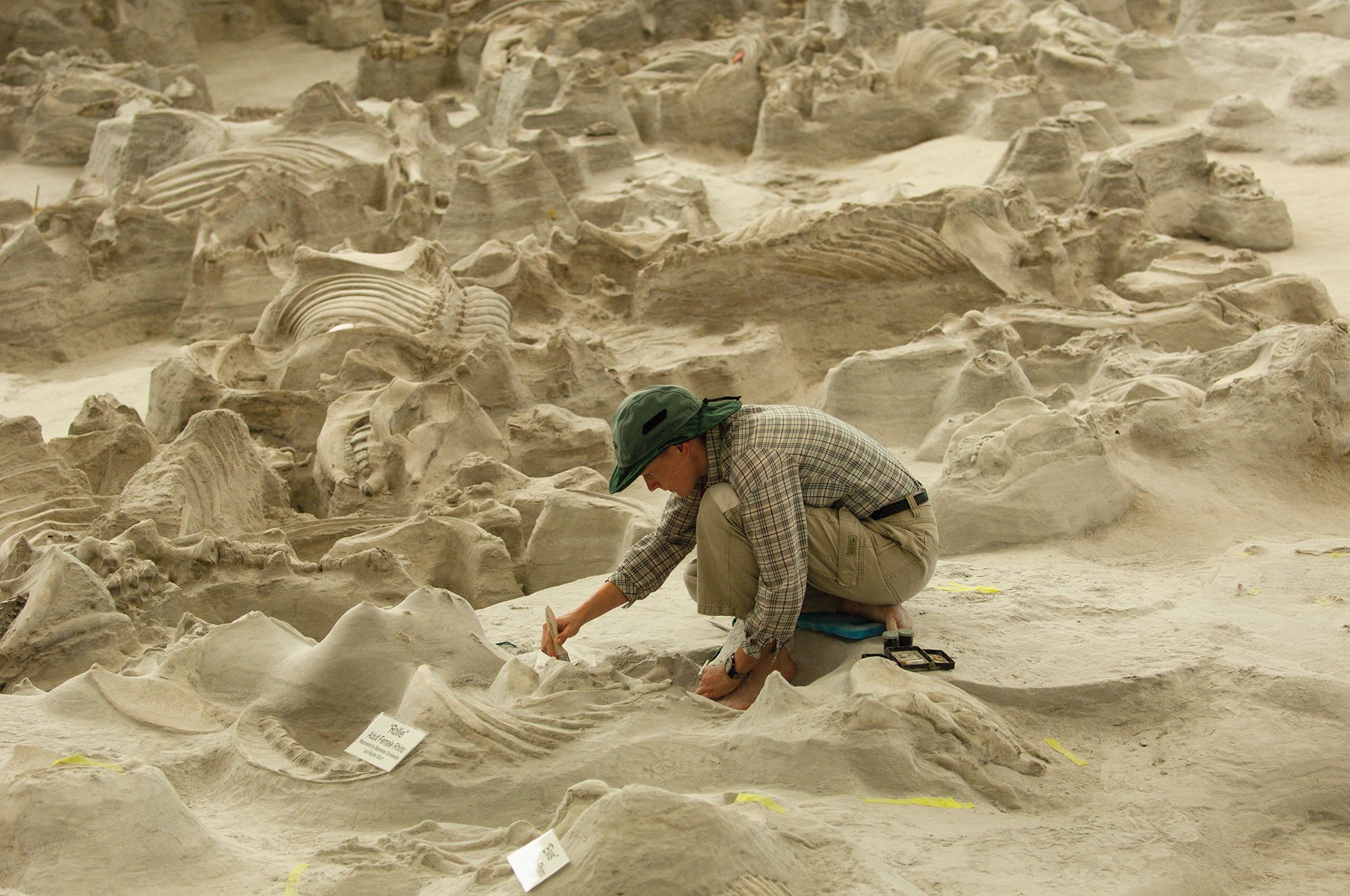
Science & Culture | Vertebrate Paleontology
Ashfall Fossil Beds
Ashfall Fossil Beds State Historical Park in Antelope County, Nebraska is a joint operation of the University of Nebraska State Museum and the Nebraska Game and Parks Commission. The Museum is responsible for all educational and scientific programs at the Park, as well as excavation, preparation and preservation of the fossils themselves.
Brief History
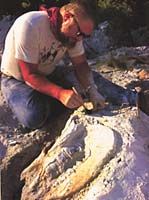
Ashfall Fossil Beds, a Museum locality originally named Poison Ivy Quarry, was discovered in 1971 by paleontologist Mike Voorhies. A scientific excavation was carried out between 1977 and 1979. Over these three field seasons, nearly 100 complete rhinos (of the genus Teleoceros) were discovered and collected, along with dozens of horses, camels, turtles, cranes, and other animals. In the mid 1980's, Mike (shown here working on the skull of a rhino) and his crew returned to the site to continue explorations and assist with the preliminary plans for a new state park. Our intent this time was not to collect the fossils, but to expose them and leave them in place in the volcanic ash for people to see!
The state of preservation of the skeletons at Ashfall is astounding and provides us with a detailed glimpse of Nebraska 10 million years ago. Aspects of population dynamics, diet, disease processes, and even social behavior are also preserved here as they are at no other known site. Complete skeletons of mammals are rare in the fossil record and add tremendously to our understanding of an animal's anatomy. Catastrophic events that preserve populations or communities of animals are incredibly rare and give paleontologists the equally rare opportunity to do highly detailed studies of such things as population dynamics, sexual dimorphism, variation and behavior.
Read the full history Ashfall: Life and Death at a Nebraska Waterhole Ten Million Years Ago by Mike Voorhies.
Photo Gallery
Related Content
-
Purchase an Ashfall Fossil Beds Visitor Guide






